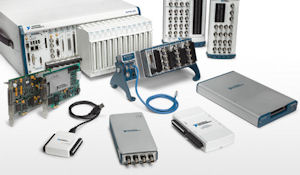Check it Out: How to Choose the Right Sensor for Your Measurement System
December 4, 2001
By Anthony J. Lockwood
Dear Desktop Engineering Reader:
Before DE, I worked for its (late) companion journal on sensing technologies. Now, a job hazard of mine—and I’m sure you live this—is I often speak to non-technical people, say, a cop who pulled me over, in work lingo. Sensor talk with non-technical people is a proven way to kibosh a conversation. For that matter, talking sensors with many engineers can give them the heebie-jeebies too.
Part of the reason for engineering edginess is that there are, oh, a zillion choices of sensors, so picking the right one for your task can be daunting, especially if you don’t work with them routinely. But in broad strokes, there are seven common sensor types: force, position and displacement, pressure, sound, strain, temperature, and vibration. So, if you know your application needs in general terms like heat or weight, you’ve already slashed off a slew of irrelevancies.
Nothing, of course, is ever that simple. Each class of sensor defines a group of devices, with each group having individual species and members with unique operational characteristics and optimal use scenarios. So, you have to shift through that before you can compare devices from different manufacturers. It’s no wonder that your eyes can glaze over.
Some help making sense of sensors is what we have for you today in the form of a six-page PDF from National Instruments titled “How to Choose the Right Sensor for Your Measurement System.” The first thing I must say is that this guide is deceptively small—I’ll explain what I mean by that in a minute.
The guide sorts sensors into those seven categories, then breaks down each category into its members. It presents explanatory data for members in columnar format. Take strain measurement. It looks at torsional and shear, axial, and bending bridges. Each is briefly defined in terms of usage, sensitivity, and considerations. This basic format is leveraged for every sensor category, with the columnar data tailored for each type. A nice, neat, and handy cheat sheet if I ever saw one.
But that’s not this paper’s true strength, which brings us back to “deceptively small.” See, and the end of each section—and for temperature devices internally—there’s a link to a far larger, in-depth technical tutorial. These linked tutorials may offer videos, wiring charts, all kinds of supplementary information, and links to even more knowledge. If you go to, say, the thermistor how-to guide, you’ll find a 60-second video, wire connection diagrams, and links to resources like webinars and a class on signal conditioning. You get the idea.
Finally, at the end of the paper, you’ll find a link to NI’s “Complete Guide to Building a Data Acquisition System”—a multi-paper, multimedia library and educational resource. You have to register for it, but everything else I discussed doesn’t have a registration (with the obvious exceptions of classes and webinars).
The upshot is that today’s Check It Out paper is both a quick reference guide on sensors and an entryway to a vast knowledge bank. I believe this all will prove invaluable to newbies and old pros alike. Hit the link over there and see for yourself.
Thanks, Pal. — Lockwood
Anthony J. Lockwood
Editor at Large, Desktop Engineering
Subscribe to our FREE magazine, FREE email newsletters or both!
Latest News
About the Author
Anthony J. Lockwood is Digital Engineering’s founding editor. He is now retired. Contact him via [email protected].
Follow DE






